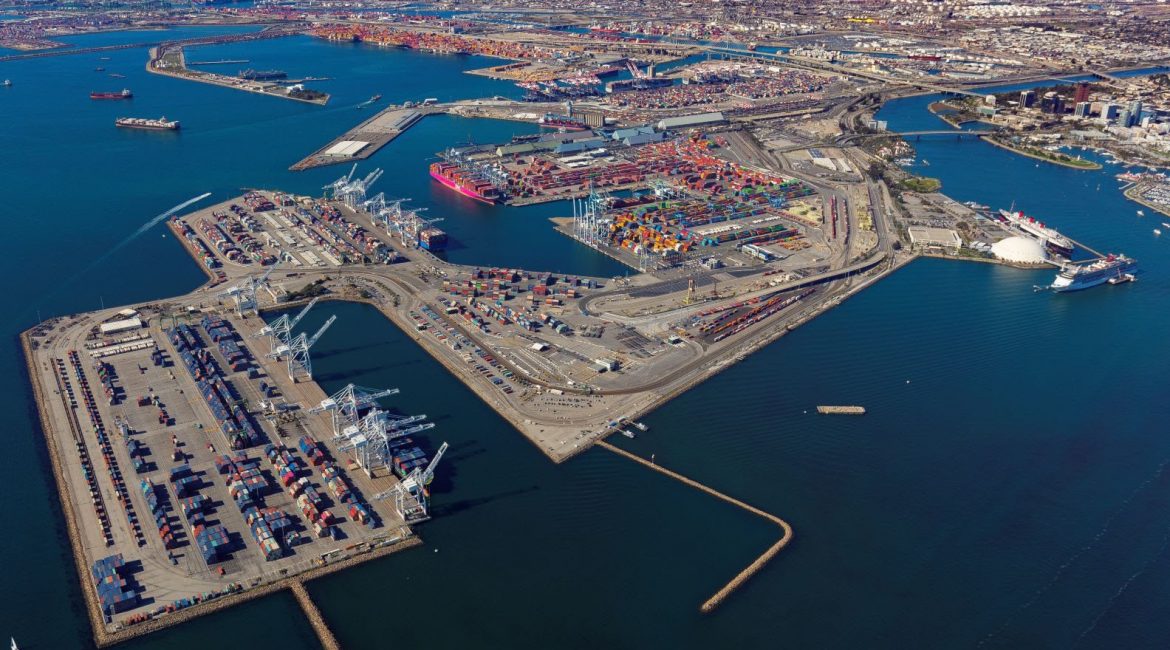Detailed plans for the first-ever trans-pacific green shipping corridor were unveiled today by key stakeholders including the Port of Los Angeles, the Port of Long Beach, the Port of Shanghai, and some of the world’s largest ocean carriers.
The corridor will help to accelerate emissions reductions on one of the world’s busiest container shipping routes.
The plan, developed with support from C40 Cities, marks an important step toward decarbonizing the global supply chains that power our economies, and transitioning toward zero lifecycle carbon emission ships. The green corridor aims to showcase advanced technologies, decarbonization practices, and efficient management strategies to reduce carbon emissions in shipping and port-related activities.
The first of its kind green shipping corridor was launched in early 2022 on the heels of the UN COP26 climate summit, where a coalition of 19 countries agreed to create zero emissions shipping routes to speed up the decarbonization of the global ocean shipping industry, which accounts for nearly 3% of the world’s CO2 emissions. The corridors refer to designated maritime routes that prioritize sustainable and environmentally friendly practices in the shipping industry, encouraging the use of cleaner fuels, energy-efficient technologies, and emissions reductions.
“This trans-Pacific green corridor will be a model for the global cooperation needed to accelerate change throughout the maritime industry,” said Gene Seroka, Executive Director of the Port of Los Angeles. “Reducing emissions in this corridor will yield substantial reductions. For perspective, most of the emissions associated with moving cargo by ship occur in the mid-ocean part of the journey between ports. This corridor will help reduce mid-ocean emissions while continuing the work we have done to cut emissions within our ports.”
Carrier partners in the trans-pacific green corridor include CMA CGM, COSCO Shipping Lines Co., Ltd., Maersk, and ONE. Other core partners include the Shanghai International Port (Group) Co., Ltd., the China Classification Society, and the Maritime Technology Cooperation Centre of Asia.
As partners, the carriers have set a goal to deploy ships on the corridor by 2025 that are capable of reducing or eliminating carbon emissions throughout their lifecycle. Additionally, they will collaborate to demonstrate the feasibility of deploying the world’s first container ships with zero lifecycle carbon emissions by 2030.
Participants will also take steps to reduce carbon emissions and air pollution by expanding the use of shore power, developing clean marine fueling infrastructure, and contracting with carriers for zero lifecycle carbon emission shipping services. Progress will be measured through the development of metrics to track decarbonization progress.
Mario Cordero, Chief Executive Officer of the Port of Long Beach, says the initiative will help drive emissions reductions across the world’s largest ocean and lead to greener practices from supply chain participants along these vital trade routes. “The new and innovative vessel technologies, increased availability of sustainable fuels and better practices created through this green corridor will also impact society’s transition to a cleaner future far beyond the areas served by our ports,” he said.
By gCaptain


